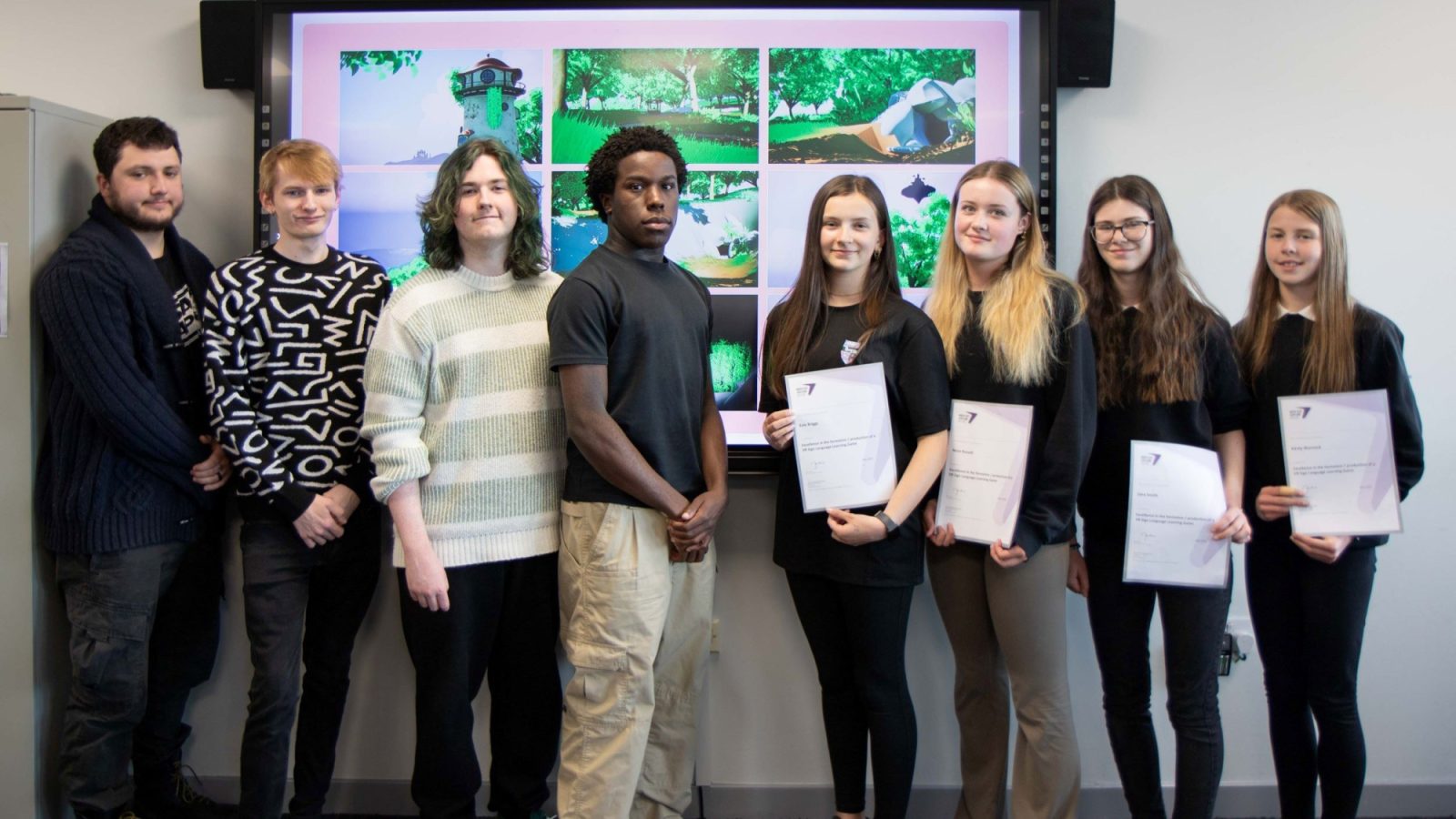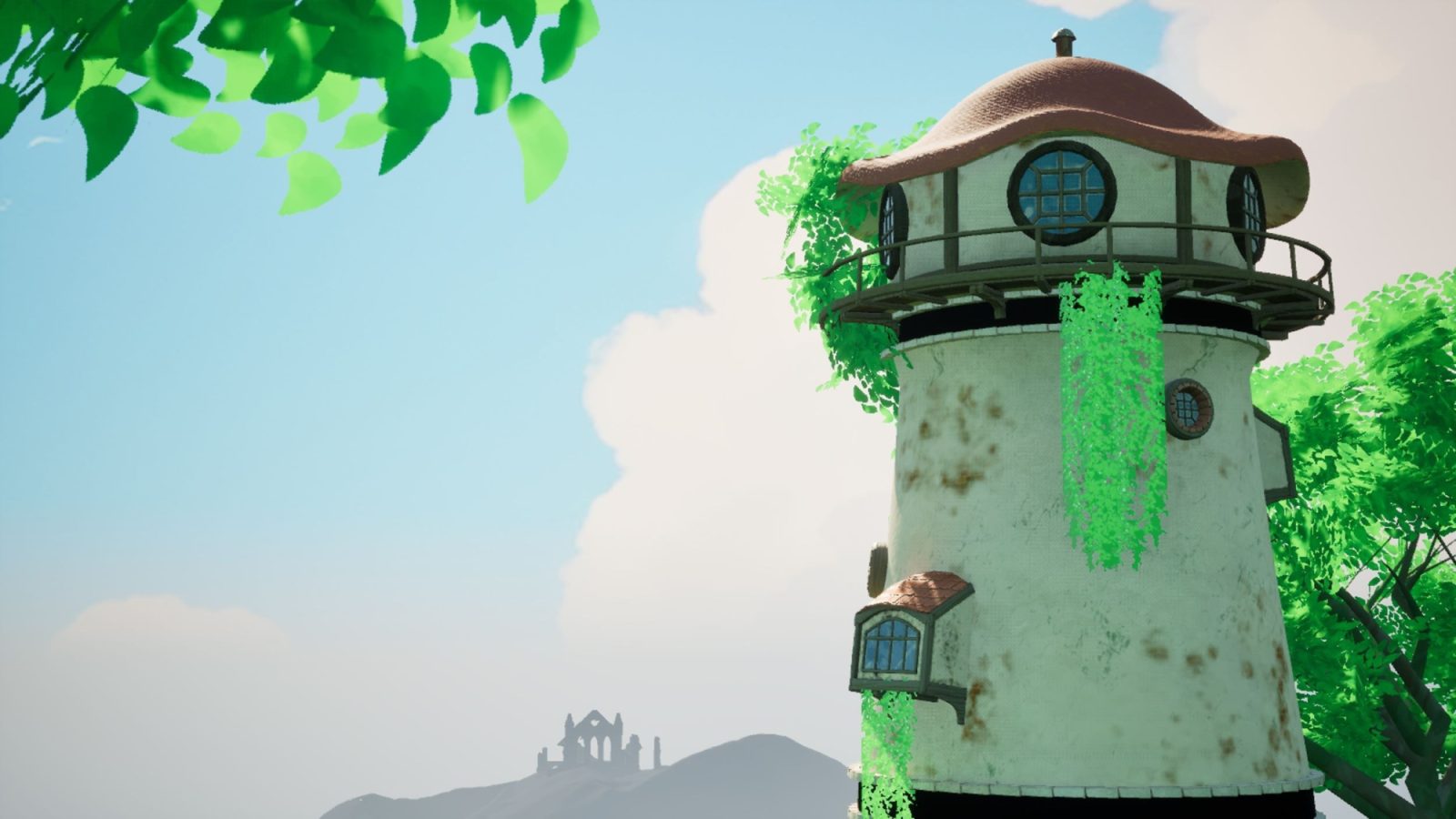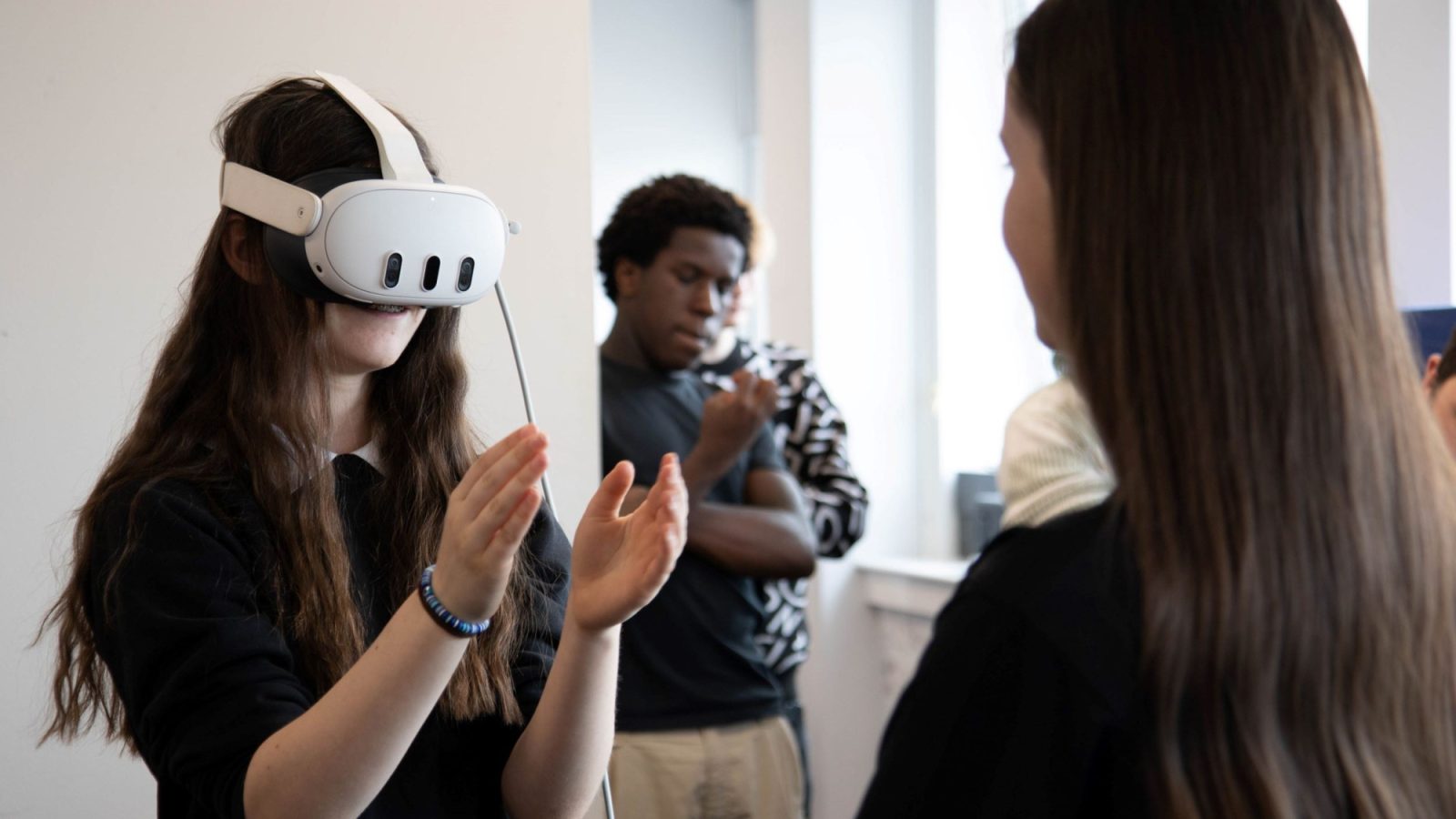A group of HND Games Design students at North East Scotland College (NESCol) have teamed up with pupils from Kemnay Academy to create a virtual reality (VR) game designed to help users learn sign language.
The concept for the game originated last year, when four S2 pupils from Kemnay Academy developed the idea as part of a school project. Through a partnership between the school and the College, the pupils were able to share their vision with a team of HND Games Design students who brought the idea to life.
Over the past three months, the students have built an immersive VR game demo, aimed at helping players learn sign language in an engaging way. The S2 pupils were invited to City Campus at the end of May to see the game in action.
Peter McGruther, Curriculum Manager for Construction, Science & Computing, NESCol, said: “This partnership is a fantastic example of the creativity and innovation that emerge when school pupils and college students collaborate.
“Taking on a real client project provided our students with valuable experience and allowed them to put their skills to the test. The resulting demo is an impressive achievement: a fun, interactive experience designed to promote inclusivity through sign language learning.”

1. NESCol HND Games Design students and Kemnay Academy pupils
Kemnay Academy is part of The Wood Foundation’s Excelerate school network which develops innovative teaching and learning approaches, including project-based learning (PBL).
Excelerate, which works with 19 secondary schools in Aberdeen City, Aberdeenshire, and Angus, provides significant professional learning opportunities to upskill teachers and education leaders, empowering them to deliver real-world, community-connected and engaging learning for young people.
The pupils undertook an interdisciplinary project for six months in their first year of secondary school, exploring the driving question: “Do video games have a place in Scottish education?”

Screenshot from Life in Sign VR game
Emma Paterson teaches Geography and Social Subjects at Kemnay Academy. She said: “The pupils aren't big gamers, and yet they came up with one of the best ideas! It was exciting for them to visit the College a year on from their project and see how the students have made their ideas a reality.
“Working with external partners gives pupils an authentic experience, where they can see how the knowledge and skills they learn in the classroom apply to the real world.
“This project was a great opportunity for them to get an insight into how video games are made, how coding works, and how we can use VR to support learning and promote inclusion. It also gave them the chance to explore the College and the potential pathways available to them after school.”
The game, called ‘Life with Sign’, allows players to use hand gestures to cast spells that summon different elements. It was built on Unreal Engine, the same tool used to create Fortnite, and the students utilised College facilities such as the PlayStation room to develop a functional demo.

3. Kemnay Academy pupils tests out the VR game
Douglas Sharpe, HND Games Design student, NESCol, said: “We didn’t realise how hard it would be to code sign language. We ended up choosing ASL, as BSL has a lot of movement that caused issues with the game registering hand signals. So far, we’ve coded two signs which spawn a fire and earth orb that you can grab and throw.
“It was daunting presenting our work to the pupils who created the concept, but it was a great opportunity for us to troubleshoot live. We encountered an issue with the game not picking up the pupils’ smaller hand sizes, so we had to fix this on the spot.”
Kirsty Warnock, S2 pupil, Kemnay Academy, said: “This experience has helped us work on our team working and problem-solving skills.”
Evie Briggs, S2 pupil, Kemnay Academy, said: “It was quite cool to see what we actually thought of developed. We started off thinking about a game for learning languages which then led us to sign language. It’s a unique type of learning so we continued from there.”
Find out more about computing courses at NESCol: nescol.ac.uk/computing